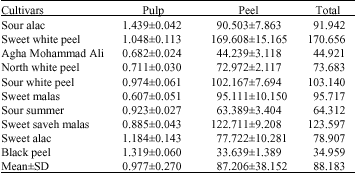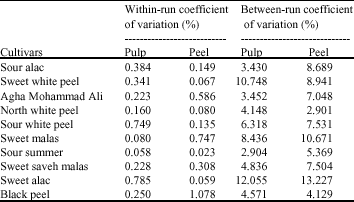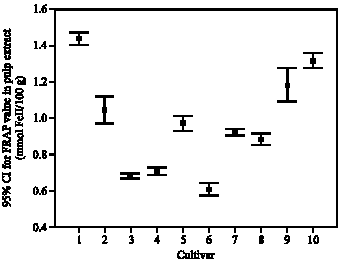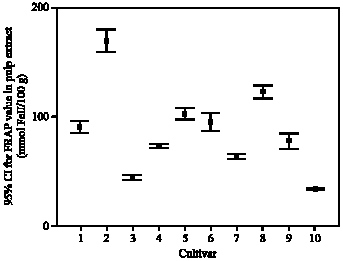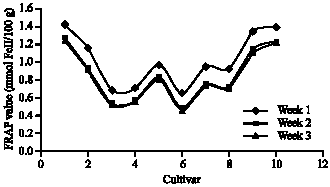Research Article
Antioxidant Properties of Peel and Pulp Hydro Extract in Ten Persian Pomegranate Cultivars
Department of Drug and Food Control,Faculty of Pharmacy,Medical Sciences/University of Tehran, Tehran, Iran
M.R. Oveisi
Department of Drug and Food Control,Faculty of Pharmacy,Medical Sciences/University of Tehran, Tehran, Iran
N. Sadeghi
Department of Drug and Food Control,Faculty of Pharmacy,Medical Sciences/University of Tehran, Tehran, Iran
B. Jannat
Department of Drug and Food Control,Faculty of Pharmacy,Medical Sciences/University of Tehran, Tehran, Iran
M. Hadjibabaie
Department of Clinical Pharmacy, Faculty of Pharmacy,Medical Sciences/University of Tehran, Tehran, Iran
E. Farahani
Department of Drug and Food Control,Faculty of Pharmacy,Medical Sciences/University of Tehran, Tehran, Iran
M.R. Akrami
Saveh Farmer Investigation Center, Saveh, Iran
R. Namdar
Health Sciences Center, University of Colorado, Denver, Colorado, USA









